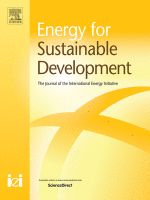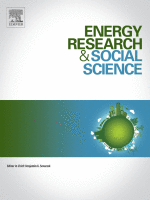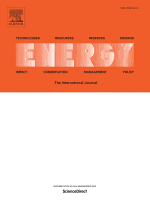- Home
- /
- Our Experts
- /
- Dua, Rubal

![Rubal Dua 4[96] Copy](/media/ouobwo2t/rubal-dua-4-96-copy.png?width=284&height=284&v=1dbddc1d4e389f0)
Primary Program

About
Rubal Dua is a Principal Fellow in the Transportation and Infrastructure Program at KAPSARC, with expertise in consumer decision-making, particularly in the adoption of energy-efficient technologies and mobility options. He holds a Ph.D. from KAUST and has expertise in advanced carbon materials for energy and environmental applications, including energy storage and carbon capture. His research bridges behavioral decision science and clean mobility, addressing shared autonomous mobility and energy transitions. Rubal’s interdisciplinary work combines technical innovation with policy analysis to support sustainable energy and transportation solutions.
Education
2010-08-01 - 2014-05-01
King Abdullah University of Science and Technology
PhD - Environmental Science and Engineering
2007-09-01 - 2010-05-01
University of Pennsylvania
Master - Chemical Engineering
2003-07-01 - 2007-05-01
Indian Institute of Technology
Bachelor - Chemical Engineering
Publications

26 November 2024
Approach and Initial Findings in Modeling Future Seaborne Trade and Its Impact on Energy Demand) emissions, prompting the International Maritime Organization (IMO) to aim for net-zero shipping greenhouse gas (GHG) emissions by 2050 to mitigate climate change. Shipping is a critical link between countries for transporting goods, and its future advancements will hinge primarily ...

26 December 2023
Estimating Car Price Elasticity Using an Inverse Product Differentiation Logit ModelSince the seminal work of Berry, Levinsohn, and Pakes (1995), random coefficient logit (RCL) has become the workhorse model for estimating demand elasticities in markets with differentiated products using aggregated sales data. While the ability to represent flexible substitution pat...

07 March 2021
Fuel Economy Valuation and Preferences of Indian Two-Wheeler BuyersIndia has experienced exponential growth in sales of two-wheelers due to their high fuel economy and easy manoeuvrability in congested traffic conditions. Understanding Indian consumers’ valuation of fuel economy while purchasing a two-wheeler is crucial to evaluate whether Indian tw...

01 December 2020
How Responsive is Saudi New Vehicle Fleet Fuel Economy to Fuel-and Vehicle-price Policy Levers?This paper investigates the drivers of recent improvements in Saudi Arabia’s fleet fuel economy for new vehicles including passenger cars and light-duty trucks. Vehicle choice models are estimated using both aggregate new vehicle sales data and disaggregate new vehicle buyer su...

01 May 2020
Effectiveness of China’s Plug-in Electric Vehicle SubsidySubsidies for promoting plug-in electric vehicle (PEV) adoption are a key component of China’s overall plan for reducing local air pollution and greenhouse gas emissions from the light-duty vehicle sector. In this paper, we explore the impact and cost-effectiveness of the Chine...

27 April 2020
Understanding Latent Demand for Hybrid and Plug-in Electric Vehicles Using Large-scale Longitudinal Survey Data of US New Vehicle BuyersConsumer adoption of fuel-efficient vehicles is a crucial step in improving energy efficiency of the light-duty vehicle sector. To promote adoption, policymakers have employed various demand- and supply-side policies including incentives, fuel economy standards, zero emission vehicle...

25 April 2020
Eliciting preferences of TNC users and drivers: Evidence from the United StatesTransportation Network Companies (TNCs) are changing the transportation ecosystem, but micro-decisions of travelers and TNC drivers need to be better understood to assess their system-level impacts. Using a unique sample (N = 11,902) of the U.S. population residing in TNC-served area...

09 September 2019
An overview of key evolutions in the light-duty vehicle sector and their impact on oil demandThe light-duty vehicle (LDV) sector is undergoing many changes, including technological advancements (e.g., vehicle electrification, automation), new business models (e.g., ride-hailing), and government regulations and policies (e.g., fuel economy (FE) standards, zero-emission vehicl...

01 August 2019
Understanding Potential for Battery Electric Vehicle Adoption Using Large-scale Consumer Profile DataTen U.S. states have set mandated sales targets for zero-emission vehicles that could result in significant reductions in fuel consumption and carbon emissions. Battery electric vehicle (BEV) adoption is considered integral to achieving this mandate and thus a better understanding of...

04 January 2019
Assessing the Effectiveness of California’s “Replace your Ride.”We analyze the effectiveness of California’s “Replace Your Ride” policy, a pilot program that gives subsidies to lower income households in the greater Los Angeles area to retire older vehicles and replace them with newer, cleaner vehicles.

03 January 2019
Measuring the Cost-effectiveness of Electric Vehicles SubsidiesDespite the prevalence of plug-in electric vehicle (PEV) subsidies, research on improving their cost-effectiveness and impact remains limited. To assess the scope for improving their cost-effectiveness, we develop a vehicle choice model-based counterfactual simulation using a large-s...

01 June 2018
Gasoline savings from clean vehicle adoptionConventional counterfactuals used in literature may underestimate fuel savings from clean vehicle adoption, thus overestimating the costs of securing associated environmental benefits. Using a large-scale nationally representative sample of U.S. new car buyers, we propose a choice mo...
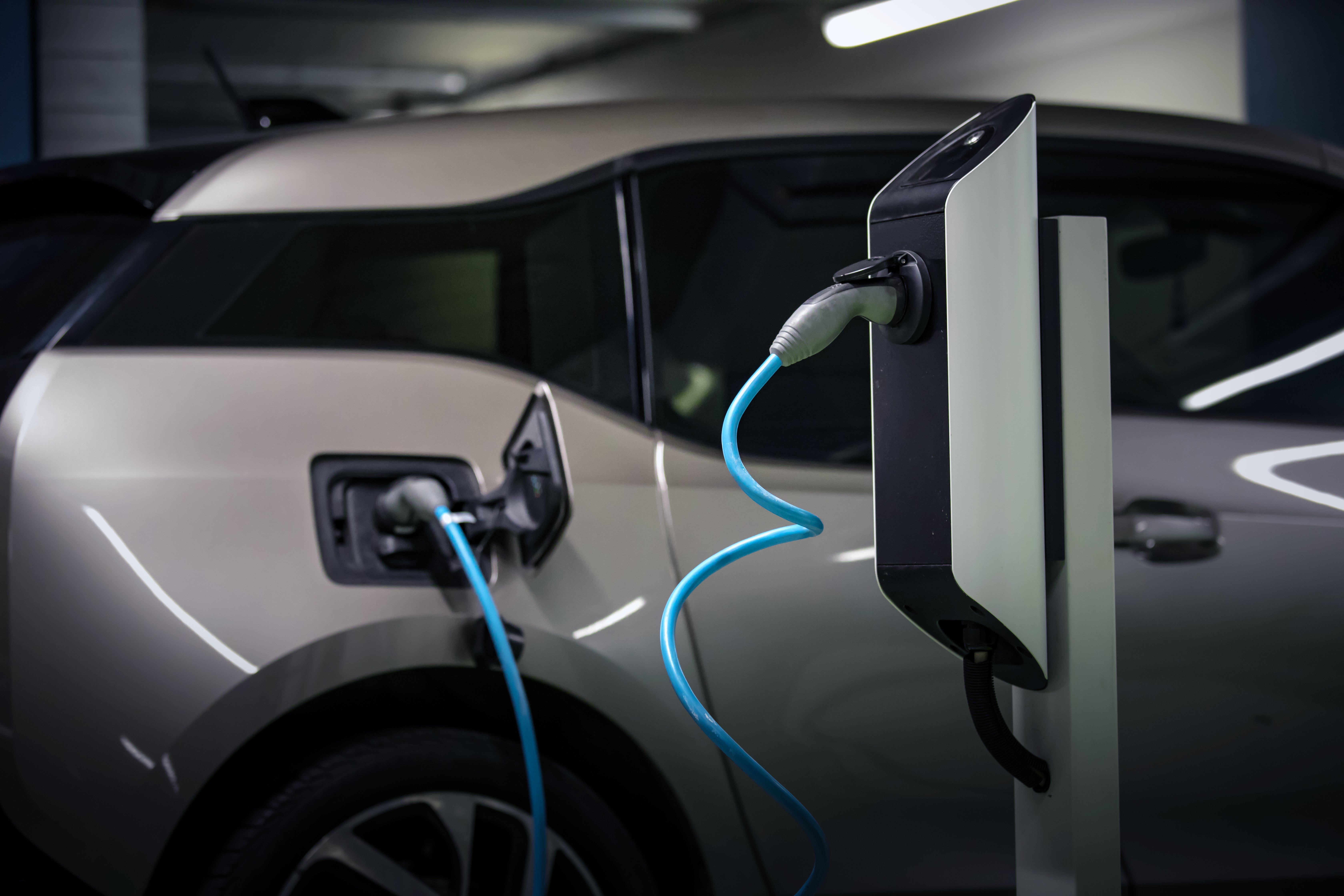
21 August 2025
China’s Vehicle Trade-In Subsidy: Impact, Cost-Effectiveness, and Barriers to Electric Vehicle Purchaseof trade-ins that would not have occurred in its absence – and analyze its cost-effectiveness. Results indicate that approximately 44% of respondent trade-ins were directly attributable to the subsidy, with a greater impact observed among lower-income consumers. On average, the subsid...

17 July 2025
An Expert Opinion-Based Perspective on Emerging Policy and Economic Research Priorities for Advancing the Low-Carbon Hydrogen SectorThis perspective sheds light on emerging research priorities crucial for advancing the low-carbon hydrogen sector considered critical for achieving net zero greenhouse gas emissions targets especially for hard-to-abate sectors. Our analysis follows a five-step process, including drawi...
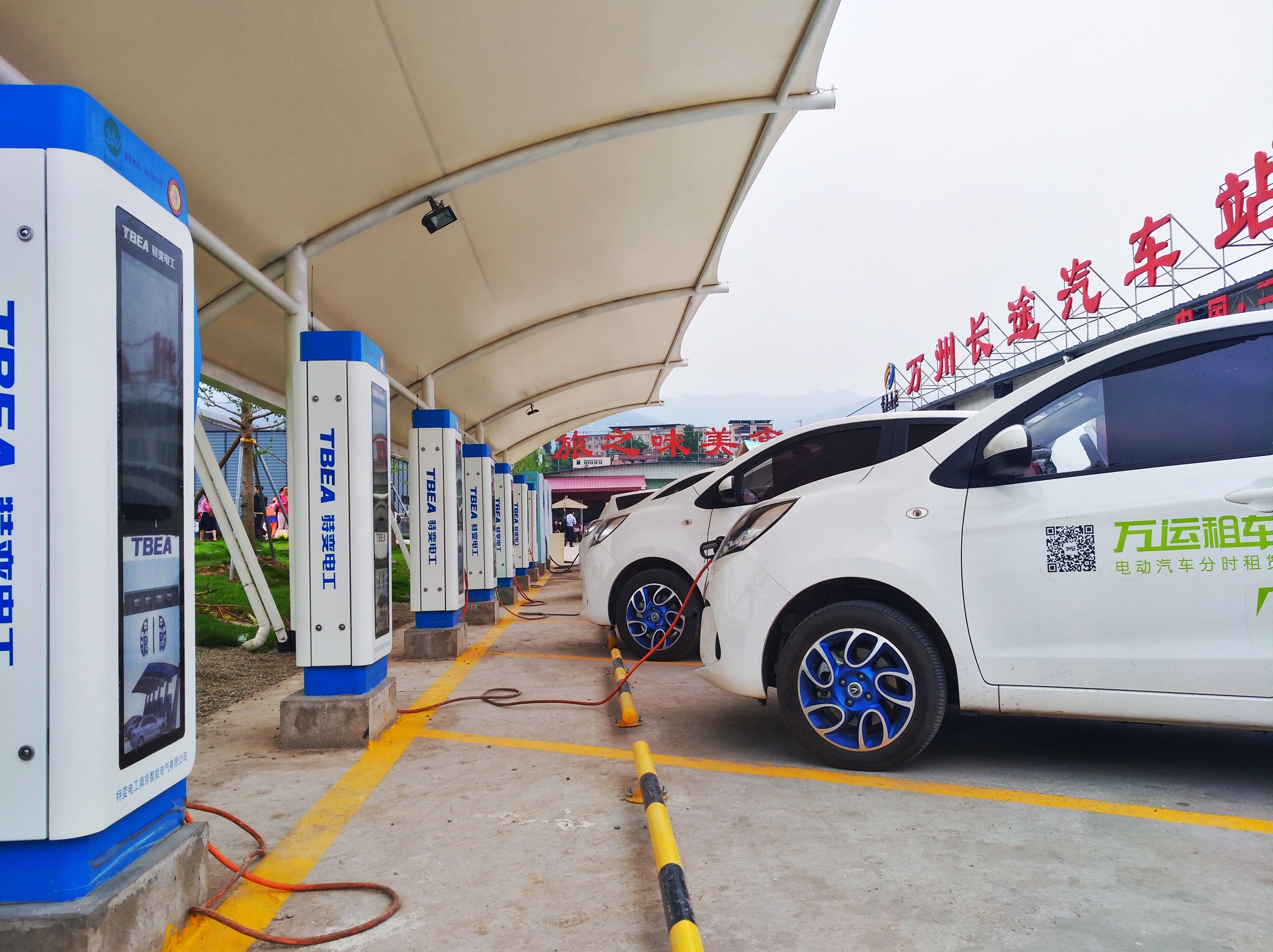
20 May 2025
Breaking Down Barriers: Emerging Issues on the Pathway to Full-scale Electrification of the Light-Duty Vehicle SectorA key pathway being considered worldwide to achieve net-zero greenhouse gas emissions in the light-duty vehicle (LDV) sector is the complete transition to electric vehicles (EVs). In this research, we assess potential barriers and challenges to fully electrifying the LDV sector. We u...

16 April 2025
Emerging Policy and Economics Research Priorities for Enabling Low-Carbon Trucking
Trucking plays a crucial role in sustaining economic activity worldwide, yet its current path of carbon emissions is out of sync with the net-zero goals set by governments globally. As a result, identifying key energy economic and policy research priorities for low-carbon trucking has...

15 October 2024
Are Automakers Overcharging Consumers for Electric Vehicle Batteries?Vehicle electrification is a major component of many sustainability goals and frameworks. Research suggests that battery costs account for a large portion of the price premium for electric vehicles (EVs) relative to internal combustion engine vehicles (ICEVs) and that price parity, w...

14 October 2024
Enabling Net-Zero Shipping An Expert Review-Based Agenda for Emerging Techno-Economic and Policy ResearchNet-zero shipping is emerging as a global priority, underscored by the shipping sector’s increasing projected contribution to climate change, making it critical to understand the emerging associated research priorities. We outline key techno-economic and policy research priorities fo...

03 September 2024
Are Households Quitting Electric Vehicle Ownership?In this paper, we investigate the proportion of U.S. plug-in electric vehicle (PEV) owners who discontinued PEV ownership by disposing of their PEV and buying a non-PEV as their next vehicle, which is termed PEV “discontinuance.”

01 September 2024
Emerging Policy and Economic Research Priorities for Enabling the Electric Vehicle SectorWe highlight key emerging research priorities on the climate- and industrial-policy driven pathway to passenger car electrification, including both pure battery electric and plug-in hybrid electric vehicles, using a three-pronged approach. This includes examining journalistic reports...

01 September 2024
Emerging Research Priorities for Enabling Aviation Climate Action: Identification and Expert EvaluationAviation climate action is emerging as a global priority, underscored by the aviation sector’s increasing projected contribution to climate change and the consequential effects of climate change on aviation operations. This makes it critical to understand the emergent associated rese...

15 July 2024
Impacts of Ride-Hailing on Energy and the Environment: A Systematic ReviewRide-hailing has expanded substantially around the globe over the last decade and is likely to be an integral part of future transportation systems. Through a systematic review of the literature concerning the energy and environmental impacts of ride-hailing, we have identified a dic...

28 March 2024
Consumer Preferences for Ride-Hailing: The Barriers to an Autonomous, Shared, and Electric FutureResearch has shown that when combined in a mobility-on-demand (MOD) framework, automation, carpooling, and electrification have the potential for theoretically large emission reductions. However, there is insufficient research regarding the consumer preferences for and behavioral res...

18 July 2023
Estimating Regional Variation in Saudi Arabia’s Energy Usage and Carbon EmissionsEstimates of regional energy consumption and carbon emissions could be useful for agencies investigating the effects of regionally targeted investments and policy interventions. Using gasoline consumption in Saudi Arabia as a case study, we develop two approaches for estimating the r...

06 June 2023
The Dynamic Role of Subsidies in Promoting Global Electric Vehicle Sales
We offer the most comprehensive analysis to date of global plug-in electric vehicle (PEV) subsidies. We accomplish this by estimating vehicle choice models for 23 countries using 2010–2019 sales data and using counterfactual simulations to assess the cost-effectiveness of PEV incent...

14 May 2023
Choosing to Diet: The Impact and Cost-effectiveness of China’s Vehicle Ownership Restrictions
Can voluntary carbon emission reduction pledges, such as the nationally determined contributions under the Paris Agreement, result in significant emission reductions? According to prominent experts such as Nordhaus (2015), Barrett (2005), and Weitzman (2019), free-riding is un...

09 April 2023
How Responsive Are New Car Buyers in India and China to Factors Driving Fuel Consumption?
China and India, the world’s two most populous developing economies, are also among the largest automotive markets and carbon emitters. To reduce carbon emissions from the passenger car sector, both countries have considered various policy levers that affect fuel price, car pr...

29 May 2022
How to Mitigate Transportation Emissions in Saudi Arabia? The Role of Energy Price GovernanceIn light of Saudi Arabia’s recent energy-pricing ...2) emissions in the transport sector. We employed a battery of econometric techniques to analyze the long-run relationships between income, fuel prices, energy share, population, and total carbon emissions in the transportation sector.

05 October 2021
Barriers to and Opportunities for Light-Duty Vehicle Electrification in India: Insights From a Survey of ExpertsAccording to the World Health Organization, India has the world’s worst air quality. Among other factors, vehicular pollution from the increasing stock of passenger vehicles has contributed to India’s deteriorating air quality. This increasing stock is also a factor in India bec...

24 August 2021
Are Consumers Myopic About Future Fuel Costs? Insights from the Indian two-wheeler marketIndia has the world’s third highest carbon dioxide (CO2) emissions, after China and the United States. The transportation sector is the third largest contributor to carbon dioxide emissions in India, accounting for roughly 11% of all carbon dioxide emissions ...

08 June 2021
How Cost-Effective Are Electric Vehicle Subsidies in Reducing Tailpipe-CO2 Emissions?The transportation sector accounts for 24% of global greenhouse gas (GHG) emissions (IEA 2020). Road transport is the most utilized mode because of its convenience (Van Essen 2008). However, it is also the most emissions intensive mode, accounting for 75% of global tran...

22 March 2021
Are Electric Vehicle Subsidies Becoming More Impactful Over Time?Various subsidies for plug-in electric vehicles (PEVs) have been implemented worldwide at the federal, state and regional levels. These subsidies aim to promote PEV adoption to help reduce both local air pollution and greenhouse gas emissions (Hardman 2019). In the United Stat...

24 February 2020
Eliciting Preferences of Ride-Hailing Users and DriversThe ‘ride-hailing’ services offered by transportation network companies (TNCs) such as Uber and Lyft have rapidly disrupted personal transportation, particularly in cities. Schaller (2018) reports that TNCs provided 2.6 billion rides in 2017 in the United States (U.S.), a 37% increa...

29 December 2019
The Effectiveness of China’s Plug-In Electric Vehicle SubsidySubsidies for promoting plug-in electric vehicle (PEV) adoption are a key component of China’s overall plan for reducing local air pollution and greenhouse gas (GHG) emissions from its light-duty vehicle sector. This paper explores the impact and cost-effectiveness of the Chinese PEV...

30 April 2019
Drivers of New Light-Duty Vehicle Fleet Fuel Economy in Saudi Arabia
- The estimated elasticities, and thus policy sensitivities, vary by income and household size. Thus, a revenue-neutral ‘feebate’ policy – involving taxes on fuel-inefficient vehicles and rebates for fuel-efficient vehicles – could be more progressive than another gasoline price incre...

24 May 2018
Vehicle Retirement and Replacement Policy: Assessing Impact and Cost-EffectivenessGovernments across the world, motivated by air quality improvement or by climate change mitigation goals, are trying to accelerate the turnover of older, higher-emitting vehicles and replace these with lower emission vehicles. One approach is to encourage consumers to scrap their old...

10 May 2018
Measuring the Cost-Effectiveness of Clean Vehicle SubsidiesDemand-side policies, including rebates, sales tax exemptions, and tax credits promote clean vehicle adoption, with the goal of reducing local air pollution and greenhouse gas (GHG) emissions. Limited research to date on their cost-effectiveness and efficiency suggests such subsidies...

16 January 2018
Gasoline Savings From Clean Vehicle AdoptionWithout the option to purchase plug-in electric and/or hybrid vehicles, conventional counterfactuals used in literature may underestimate the fuel savings from clean vehicle adoption, thus overestimating the costs of securing associated environmental benefits. Using a nationally repr...

16 April 2017
Understanding Long Term Consumer Demand For Fuel Efficient VehiclesConsumer adoption of fuel-efficient vehicles is a crucial step in improving energy use and reducing emissions from the transportation sector. The range of options includes hybridization of powertrains all the way through to fully electric vehicles. To promote adoption, policymakers h...

16 May 2016
Understanding Adoption of Energy-Efficient Technologies: A Case Study of Battery Electric Vehicle Adoption in the U.S.The adoption of energy-efficient technologies is a key factor in improving energy utilization. The ways in which consumers make their decisions – incorporating non-economic factors – is critical to understanding the pace and depth of adoption. We present a way of characterizing curre...

18 March 2024
Identifying Emerging Challenges and Priorities for Aviation DecarbonizationDecarbonization of the aviation sector has emerged as a global concern because the sector contributes 2%-3% to total global greenhouse gas emissions. Thus, it is critical for us to understand the associated emerging challenges. We determine key research priorities for achieving effec...

14 September 2023
Expert Survey Assessment of Emerging Maritime Decarbonization Challenges and Priorities
The decarbonization of the maritime sector has emerged as a global concern due to the shipping sector’s 3% contribution to world’s total greenhouse gas (GHG) emissions. Notably, the latest developments involving the adoption of more ambitious GHG reduction targets by the Internationa...

15 September 2025
A Perspective on the Evolving Plug-in Electric Vehicle Landscape Amid Trade Tariffs and Strategic ResponsesVarious explanations have been proposed for the recent slowdown in the growth of global plug-in electric vehicle (PEV) sales. Considerable uncertainty also remains regarding future PEV adoption rates due to evolving consumer incentives and newly announced Western tariffs on Chinese PE...
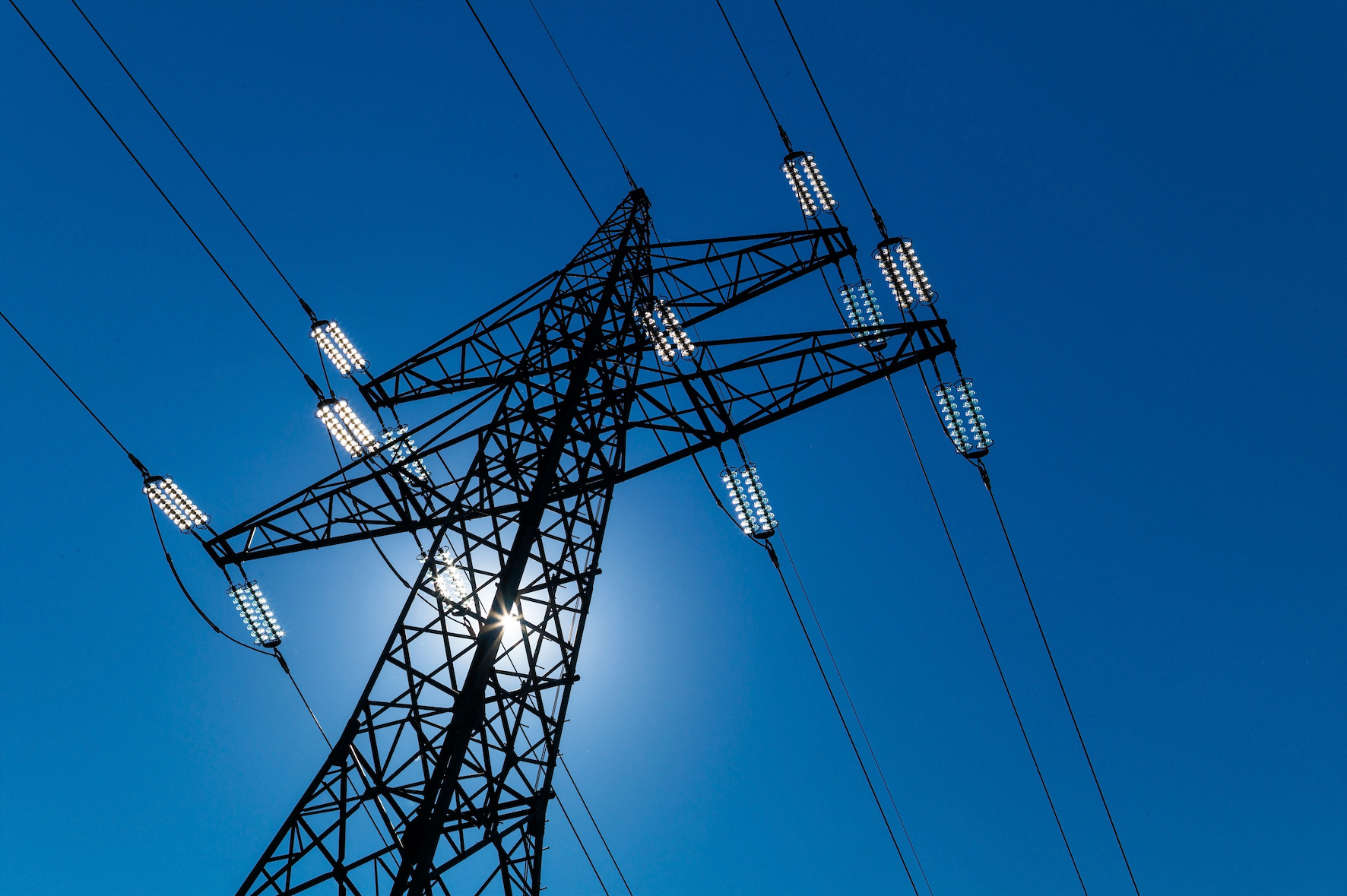
22 January 2024
Assessing the Impact of Electric Vehicle Penetration on Electricity Demand in RiyadhThis paper aims to assess and estimate the impact of electric vehicle (EV) penetration on annual electricity demand, specifically in Riyadh, the capital city of Saudi Arabia. Such an assessment can yield significant insights for stakeholders, including policymakers, energy planners, ...

25 October 2023
Cost-Effectiveness Analysis of Aerodynamic Improvement Technologies for Road Freight Transport in Saudi ArabiaFor the last several decades, road freight transport has been one of the fastest growing energy- and oil-consuming sectors in Saudi Arabia. With sustainability being one of the key pillars of Vision 2030 and given the Kingdom’s commitment to achieving carbon neutrality by 2060, decar...

21 August 2023
Future Fuel Demand From the Saudi Shipping Sector: A Business-as-Usual Estimation
The purpose of this commentary is to suggest a rough estimation of future exp...
- A global average energy intensity of 0.078 megajoules per tonne-kilometers (MJ/tonne-km).
- An average export distance of 5,441 nautical miles (nm) between Saudi Arabia and export trading partner countries.

13 June 2023
Challenges Facing the Circular Economy That Aims to Improve Electric Vehicle Sector Sustainability
Governments around the world are increasingly focusing on the future of transportation, particularly road transportation, to reduce global greenhouse gas emissions and local air pollution. As the shift to low-carbon transportation continues, the sales of electric vehicles (EVs) are e...

04 April 2023
Can Circularity-Based Approaches Prevent a Cobalt Supply Shortfall?
Electric vehicle batteries rely heavily on a small number of critical minerals, including cobalt. Cobalt metal prices have doubled over the past year as a result of a mismatch between supply and demand, particularly for electric car batteries (Hume 2022).

26 April 2021
India’s Political Ambition of Implementing Plug-In Electric Vehicle Sales TargetsThe Indian transportation sector is going through a massive transition, especially the light-duty vehicle (LDV) sector. Policymakers consider the electrification of road transport to be one of the ways of solving India’s triple problem of increasing greenhouse gas (GHG) emissions, ri...

21 April 2021
Responsiveness of Saudi New Vehicle Fleet Fuel Economy to Fuel and Vehicle Price Policy Levers). However, the extent to which these policies have been effective in improving the Saudi new vehicle fleet fuel econo...Energy Economics journal that explored the impact of fuel- and vehicle price-related policies on Saudi Arabia’s new vehicle fleet fuel economy (Sheldon and Dua 2020).

12 April 2021
What Policy Levers Could Address Indiaʼs Automobile-Related Externalities?The Indian government has shown a growing recognition of the need for policy instruments aimed at addressing increasing air pollution, oil imports, and greenhouse gas (GHG) emissions associated with India’s light-duty vehicle (LDV) sector. Based on the findings of a survey of ...

03 February 2021
Understanding Latent Consumer Demand For Fuel-Efficient Vehicles
Consumer adoption of electric vehicles (EVs) – including hybrids, plug-in hybrids and pure battery electric – is a crucial step in improving energy use and reducing emissions in the transportation sector. To promote adoption, policymakers have employed various demand- and supply-side...

30 August 2020
Understanding the Evolution of the Impact and Cost-Effectiveness of Electric Vehicle SubsidiesOur previous research found that promoting plug-in electric vehicle (PEV) adoption through financial subsidies is expensive. In this commentary, we explore how the cost-effectiveness of the PEV subsidy program has evolved over time. To understand this evolution, we developed vehicle ...

24 June 2020
Estimating the Size and Efficiency of the Saudi Vehicle Fleet
Estimates of the size of Saudi Arabia’s vehicle fleet in 2015 vary from as high as 18 million (Arab News 2014) to as low as 6.6 million (OICA 2019). This significant variation stems from the fact that the Kingdom does not operate a vehicle registration program that deletes vehicle re...

26 December 2019
Understanding the Impact of Ride-Hailing Services on Travel BehaviorMajor transformations are taking place in the road transportation sector, particularly in passenger auto travel. The arrival of transportation network companies (TNCs), including Uber, Didi Chuxing, Ola, Lyft and others, has the potential to critically alter key aspects of passenger ...

23 November 2023
Worldwide intraregional and interregional air passenger traffic volume distribution

26 October 2023
Worldwide Intraregional and Interregional Air Freight Traffic Volume DistributionFreight by air does not comprise a significant share of the worldwide tonnage due to its cost compared to land (road and rail) and sea transport. However, air freight is important for commodities that either have high values or are time-sensitive. For instance, documents, perishable ...

25 May 2022
Current and Future Trends in Saudi Arabia’s Container ThroughputThe maritime sector is a key pillar for the diversification of the Kingdom of Saudi Arabia’s economy, and it has been prioritised by the Saudi government due to its strategic importance. Saudi Vision 2030 has set a target for making KSA a global logistics hub. Correspondingly, the Ki...

25 May 2022
Post-Covid Recovery of Air Traffic in Saudi ArabiaThe dramatic drop in air traffic caused by the COVID-19 pandemic and the related travel restrictions has significantly impacted the aviation industry in Saudi Arabia and around the world. The sector has suffered considerable losses due to the reduction in passenger traffic.

05 March 2023
Is the Recent Price Spike in Electric Vehicle Lithium-Ion Battery Packs Temporary or the Start of a New Trend?
Most nations are evaluating vehicle electrification as a way to decarbonize their passenger car sectors. To make electric vehicles competitive with conventional vehicles for cost-conscious consumers, the upfront purchase price of electric vehicles needs to fall. The battery pack is t...

15 February 2023
Bans on the Sale of Gasoline- And Diesel-Powered Vehicles: Why Are Policymakers Favoring Commandand- Control to the Point of Banning, and Does It Send Unintended Policy Signals?
In recent years, the adoption of command-and-control policies, from mandating sales of zero-tailpipe-emission vehicles all the way to prohibiting future sales of gasoline- and diesel-powered vehicles via tailpipe carbon dioxide (CO2) emissions standards or otherwise, has gained momen...

13 October 2022
How Long Will the Semiconductor Crisis Affect the Traditional Automotive Sector? Implications for car fuel demand
The 2020 semiconductor crisis has hit the automotive sector, as well as many other sectors. As a consequence of the COVID-19-induced shock, a worldwide semiconductor supply-demand imbalance arose between 2020 and 2022. Demand grew by around 17% annually while manufacturing capacity ...

29 June 2021
Once Consumers Adopt an Electric Vehicle, Do They Go Back?The lack of repeat adoption of low carbon technologies has implications for climate change mitigation. In this insight, we explore how many electric vehicle owners dispose of their electric vehicles and do not buy another when purchasing their next car. We also investigate their reas...

19 July 2020
The Impact of Recent Changes to China’s Plug-In Electric Vehicle Subsidy DesignSubsidies that promote plug-in electric vehicle (PEV) adoption have been a key component of China’s overall plan for reducing local air pollution and the greenhouse gas emissions from its light-duty vehicle sector. Since 2009, PEVs qualify for substantial rebates (up to US$9,000) fro...

03 December 2019
Impact of India’s Recent Electric Vehicle Subsidy AnnouncementThe Indian government is urgently promoting electric vehicles (EVs) to help curb the country’s urban air pollution — the world’s worst, according to the World Health Organization. The steep increase in vehicle sales in recent years has brought deteriorating air quality and made India...

17 July 2019
Impact of China’s Plug-In Electric Vehicle Subsidy Reduction
PEV subsidies are one of the most commonly used policy levers for encouraging PEV purchases globally, including in China. They reduce the high up-front purchase price of PEVs relative to comparable ICEVs, one of the major barriers to PEV adoption. Since 2009, PEVs qualify for su...

17 September 2020
A Cost-Effective Pathway to a Low-Emissions Transportation Future

09 October 2017
Understanding demand for hybrid and electric vehicles using large-scale consumer profile dataConsumer adoption of hybrid and electric vehicles is a crucial step in improving energy utilization and reducing emissions from the transportation sector. T... Link: https://www.scopus.com/inward/record.uri?eid=2-s2.0-85050097941&partnerID=40&md5=fd6ac204cd44dcd69b41d1eca57ead78
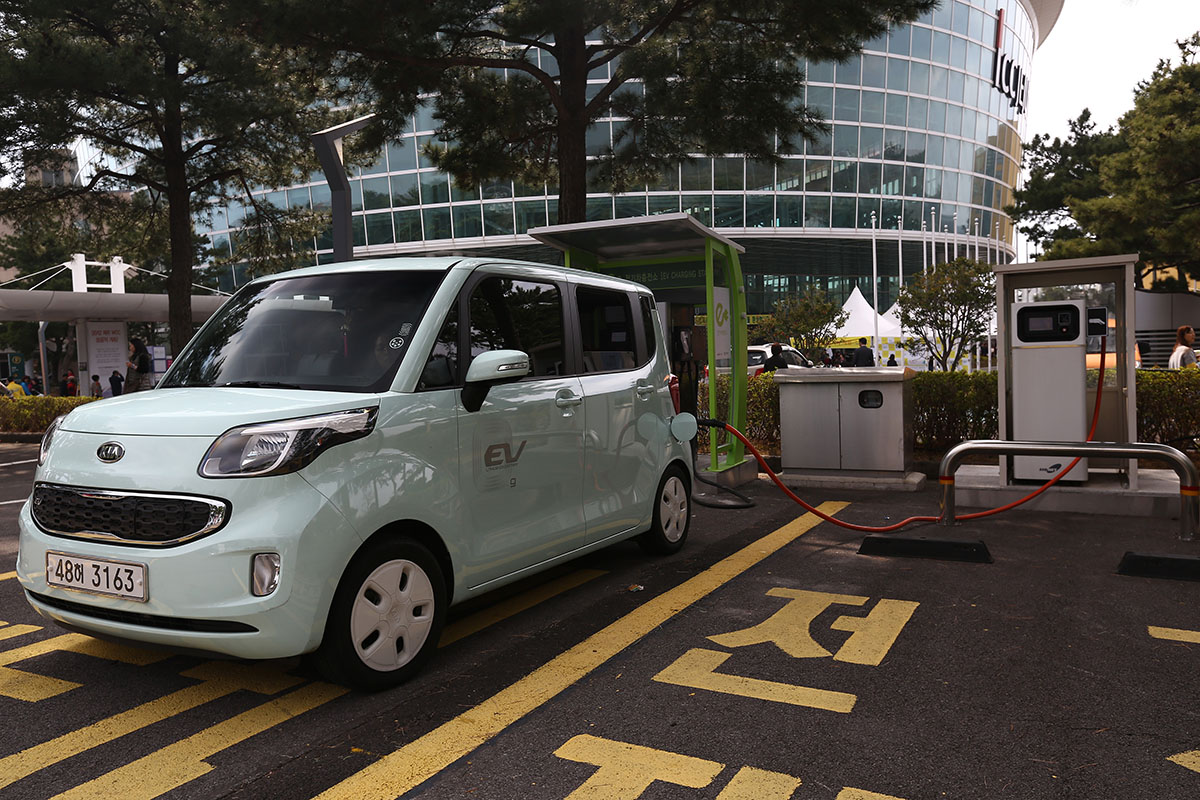
28 May 2025
Balancing The Value Of Plug-in Electric Vehicle SubsidiesWhile subsidies increase sales in the medium term, they can pose significant challenges to overall cost-effectiveness.

09 April 2025
A New Route To A Sustainable Aviation IndustryAnalysis of emerging trends in aviation identifies critical areas requiring further research to enable aviation climate action.
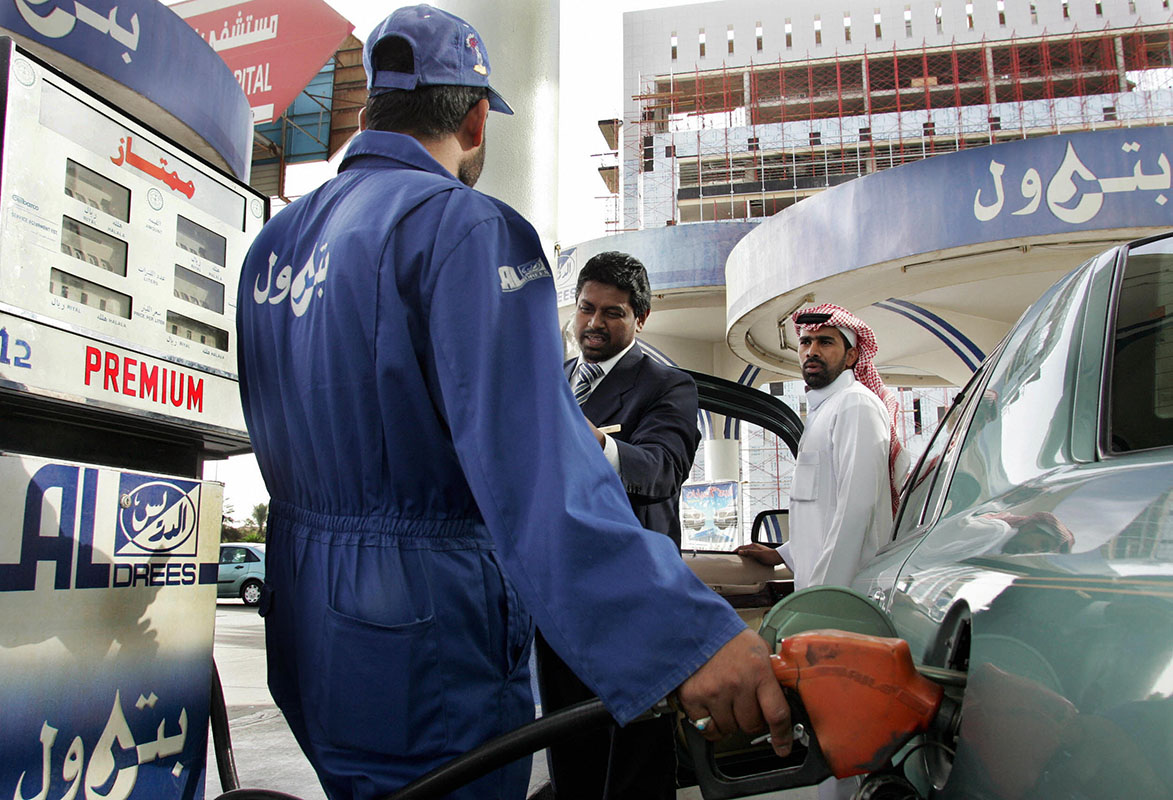
05 February 2025
Fuel Price Reform Among Options To Cut Transport-Linked EmissionsEfforts to mitigate carbon emissions linked to transport will require detailed analysis and new policy ideas.

02 December 2024
What's Driving Plug-in Vehicle Abandonment?Understanding why American electric vehicle owners are switching back to gasoline could help other countries develop more effective policies for EV adoption.

29 November 2024
Decarbonization Makes Waves In Maritime ShippingProgress toward a low-emission global maritime shipping sector requires a concerted effort.

